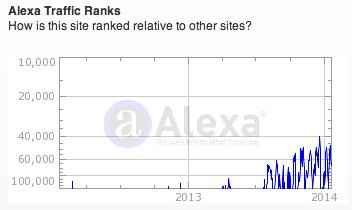5 Easy Ways to Improve Your Site Speed

Site speed is one of the most overlooked and yet important factors in converting visitors into buyers. 57% of visitors leave a site if it takes more than three seconds to load.
This means that having a fast site is not only essential for ranking well in Google, but also for increasing your sales.
Let’s have a look at how you can improve your site speed effortlessly.
1 – Choose the Right Hosting Service
When it comes to hosting, most site owners choose shared hosting as it is the cheapest possible option. While it’s enough at the start, you’ll likely need to upgrade your hosting as soon as you start getting more traffic. Different web hosting services offer flexible plans for management platforms such as A2 hosting that allow users to have flexibility in server locations. This is extremely helpful for websites that are spread across the globe or are regional-specific.
It’s important to choose a hosting service that offers high standards of performance, bandwidth, and fast speed, such as Cloudways that provides a cloud-based managed hosting with multiple options for excellent value – Check out Cloudways reviews on HostAdvice.
2 – Minimize HTTP Requests
An HTTP request is made every time a browser tries to fetch a file, page, image, or other components from a web server.
The more components you have on your site, the longer it takes for the page to load completely.
You can check the number of HTTP requests your site makes using Hubspot’s Website Grader.
Follow these steps to reduce the number of HTTP requests:
- Combine CSS/JS files: Combining your CSS files into one larger file (same for JS) can help you reduce the page load time. You may need your developers to help to combine the files.
- Remove unnecessary images: Consider removing images that aren’t contributing much value to your site.
- Set asynchronous loading: This is applicable if your website is written in JavaScript. Asynchronous loading enables browsers to render multiple page elements at the same time.
You may not notice a change in page speed immediately, but it will surely help you in the long run.
3 – Leverage CDNs
CDNs (Content Delivery Network) spreads your content across multiple locations throughout the globe. CDNs then deliver the website and its components from the closest server.
With CDN, pages load faster than it would if the browser were making requests to a server located geographically far away.
A website’s network using a CDN (but originally hosted in Texas) will look something like this.
CDNs also reduce bandwidth costs through caching and other optimizations. Depending on your requirements and budget, you can choose a CDN provider.
4 – Enable Compression
Enabling compression can reduce your page’s size, thereby increasing the loading speed. You can use software like Gzip to compress files.
Gzip locates strings of similar code in your text and files (CSS and HTML), then temporarily replaces them to make the files smaller.
Also, high-quality images can impact your page’s loading time. Use tools like JPEGMini to compress the images while maintaining its quality. Make sure all your images are below 150KB.
Every time you add a new image on your site, compress it beforehand to prevent it from impacting your site loading time.
5 – Enable Browser Caching
Enabling browser caching will improve your site speed.
When a user visits your website, browser caching will store site resources in the browser cache (temporarily).
This means that the next time a user visits your site, their browser can load the page without having to send HTTP requests to the server. When the user visits another page on your website, your logo and CSS files do not need to be loaded again.
If your site is dynamic, reduce the expiration time of the cache file.
Because, if you tell the browser to cache the previous version of the CSS, then your site (updated) might appear broken to some users.
Final Thoughts
Improving your site speed is one of the best ways to boost your site’s ranking in the SERPs and increase conversion rate.
Ensure that you choose the right hosting service.
Also, try to reduce the number of HTTP requests, enable browser caching, compression, and use a CDN to reduce the loading time.





